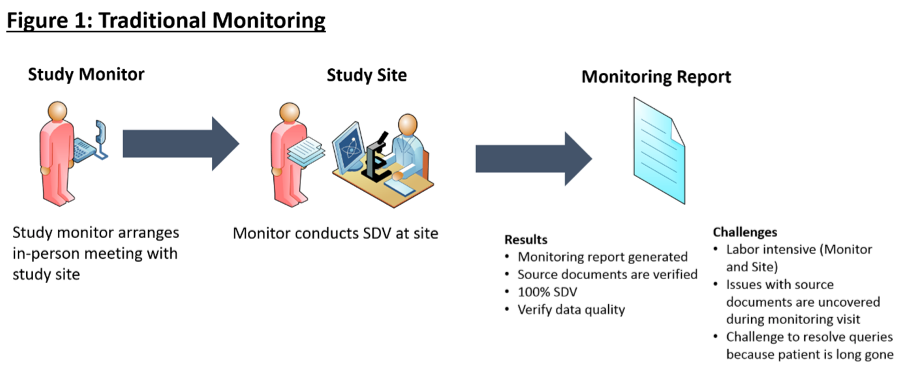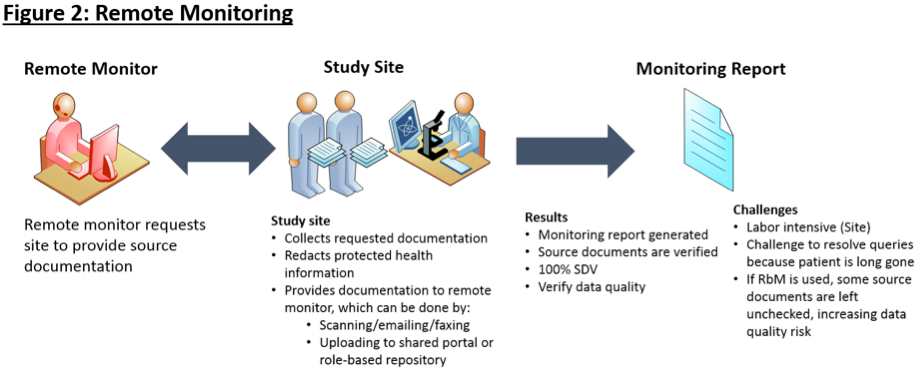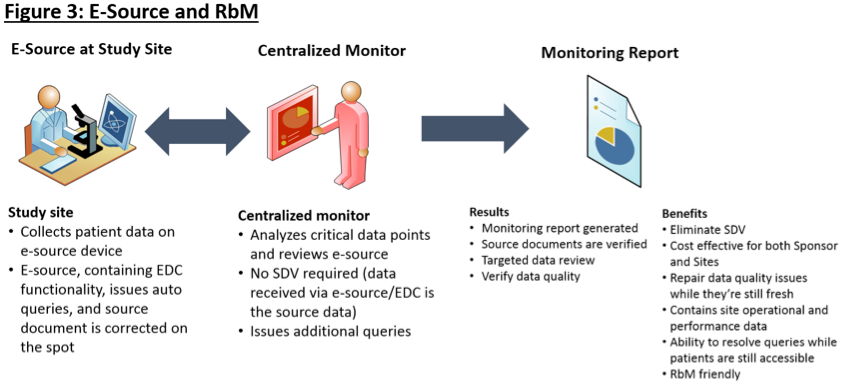eSource: RbM Evolution is Coupled with SDV Elimination
The emergence of risk-based monitoring (RbM) is creating a revolution in the way biopharmaceutical sponsors and CROs manage clinical trial quality.
The emergence of risk-based monitoring (RbM) is creating a revolution in the way biopharmaceutical sponsors and CROs manage clinical trial quality. However, with the massive variability in the way study teams execute RbM, study sites are expressing concerns over how study teams are executing RbM.
Specifically, study sites are trying to differentiate between RbM and remote monitoring (RM), and study sites still experience financial burdens associated with such activities. While many clinical operations personnel are focusing on identifying how RbM will result in a paradigm shift, few are concentrating on addressing the real pain point of RbM/monitoring: source document verification (SDV).
This article will discuss the differences between traditional monitoring, remote monitoring, and how innovative technologies, such as eSource, will fit in to risk-based monitoring, and ultimately eliminate SDV.
The Evolution of Clinical Trial Monitoring
This section will describe the evolution of clinical trial monitoring. Figure 1 illustrates a process flow for traditional monitoring.

In this case, the study monitor arranges an appointment with the study site (which can last days), conducts 100% SDV at the site, and generates a monitoring report. This resource intensive process is associated with data cleaning challenges, as sometimes monitors uncover issues and errors with unverified source data long after a patient is gone, which places pressure on data cleaning efforts. In order to mitigate this outcome, monitors have to conduct more frequent site visits, which strains clinical trial budgets. RbM execution can be quite a challenge in this case, as time delays associated with the data verification process creates discrepancies in RbM reporting.
Figure 2 delineates an RM process flow.

In this scenario, the remote monitor requests the site to provide source documentation, and the site, correspondingly, offers the necessary source documentation remotely. Unfortunately, the site is sometimes burdened with additional tasks, such as scanning and faxing documentation. Moreover, the lack of monitor presence can impact study site performance (i.e., enrollment, motivation, operational quality, etc.). Similar to the traditional model, the RM process also poses challenges towards RbM execution due to data verification time delays.
Figure 3 outlines the eSource process, and how it fits in to RbM.

eSource is a technology that enables direct data entry into an electronic tablet, and the technology is typically coupled with Electronic Data Capture (EDC). Subsequently, the electronic record becomes the source, and is accessible via a web portal. Additionally, similar to EDC, the technology is capable of issuing auto queries on the source if there are erroneous or questionable data points, which enhances data quality.
As the research coordinator inputs source data into e-source, the centralized monitor can immediately access, visualize and verify source data, and can issue additional queries to study sites for any questionable data. This self-repairing process ultimately cleans data in real time as the study progresses.
This technology offers many benefits compared to traditional monitoring models. Firstly, direct data input into eSource essentially eliminates SDV. Secondly, the system’s ability to offer real-time access to source data enables RbM, and significantly enhances data quality repair efforts in real time, while the site still has access to clinical trial patients. Lastly, as a result, the process saves costs (for both the sponsor and study site) and mitigates data cleaning timeline slippage.
Will eSource Eliminate SDV? The Polaris Perspective
Many question whether eSource will eliminate SDV, and whether the technology is compatible with RbM. Industry experts believe that eSource is an RbM enabling technology; “eSource is not in itself risk-based, but it is a facilitating technology. When direct-to-EDC technology is used, there is no lag time between a subject visit and eCRF data entry. Since RbM depends on analyzing data, and doing so as early as possible, direct-to-EDC entry is highly desirable for RbM,” said Laurie Meehan from Polaris Compliance Consultants, Inc.
Industry experts also see that SDV will eventually diminish. “A joint study conducted by Medidata and TransCelerate revealed that just over 1% of site-entered eCRF data are corrected due to SDV [1]. If industry accepts this, we should see a dramatic reduction in SDV rates. Because direct-to-EDC technologies obviate the need for SDV, they render the whole debate moot, but, widespread adoption of these technologies will take time. Interestingly, by the time direct-to-EDC technology is ubiquitous, SDV rates may be close to zero anyway,” added Meehan.
Ding Dong: SDV is Gone?
While the process of SDV is not technically gone, innovative processes associated with SDV eliminates the activity of verifying source documents with EDC data, a costly, inefficient, and (an arguably) unnecessary task. Clinical Ink and Target Health, Inc. featured use cases on the benefits of leveraging e-source at CBI’s Risk-Based Monitoring for Small to Midsized Organizations Conference in San Francisco. For exciting updates on the evolution of eSource and RbM, don’t miss CBI’s upcoming events: eSource in Clinical Investigations, May 4-5, 2015 and Risk Based Monitoring in Clinical Studies, November 5-6, 2015 in Philadelphia.
References:
Behind the Buzz: Why Clinical Research Leaders Flock to SCOPE Summit
February 7th 2025In this episode, we meet with Micah Lieberman, Executive Conference Director for SCOPE Summit (Summit for Clinical Ops Executives) at Cambridge Innovation Institute. We will dive deep into the critical role of collaboration within the clinical research ecosystem. How do we bring together diverse stakeholders—sponsors, CROs, clinical trial tech innovators, suppliers, patients, sites, advocacy organizations, investors, and non-profits—to share best practices in trial design, program planning, innovation, and clinical operations? We’ll explore why it’s vital for thought leaders to step beyond their own organizations and learn from others, exchanging ideas that drive advancements in clinical research. Additionally, we’ll discuss the pivotal role of scientific conferences like SCOPE Summit in fostering these essential connections and collaborations, helping shape the future of clinical trials. Join us as we uncover how collective wisdom and cross-industry partnerships are transforming the landscape of clinical research.
Reaching Diverse Patient Populations With Personalized Treatment Methods
January 20th 2025Daejin Abidoye, head of solid tumors, oncology development, AbbVie, discusses a number of topics around diversity in clinical research including industry’s greatest challenges in reaching diverse patient populations, personalized treatment methods, recruitment strategies, and more.